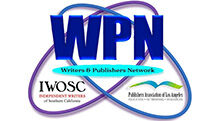 by Bobbie Christmas
by Bobbie Christmas
Q: I’ve created a series of interactive gift books. I think my idea would be great for a company like Hallmark, Peter Pauper Press, or Abrams, but I am having a difficult time locating agents that state they are looking for these types of book ideas. It seems that agents are mainly interested in fiction or nonfiction manuscripts, and my idea doesn’t fall under these categories. If major companies like Hallmark accept submissions only through literary agents and I can’t find agents interested in this type of submission, how do I get my idea to these companies?
A: First off, if I recall correctly, Hallmark produces all its products in-house and does not buy from freelancers. I could be wrong about its policy, though.
More importantly, you may have focused in the wrong direction. Hallmark aside, several gift-book producers accept submissions directly from the creators, so you may not need an agent. I saw at least a handful of gift-book publishers listed on WritersMarket.com that don’t require agents, and you may be able to find even more. I recommend you look for publishers instead of agents and follow the publishers’ submissions guidelines.
Q: I read that lists must be parallel. Does that mean I have to put all lists in vertical format?
A: I fear you may have misunderstood what you read. Lists can be vertical or horizontal, but by “parallel” it means that the items in the list must be similarly structured. For example, in the following sentence, the items are not parallel: “I like to dance and swimming.” Parallel would be either “I like dancing and swimming” or “I like to dance and swim.”
Here are some other examples: Not parallel: The things we must take to the beach include: 1) towels 2) bathing suits 3) food 4) and to leave on time. Parallel: The things we must take to the beach include: 1) towels 2) bathing suits, and 3) food. We also have to leave on time. Not parallel: Joan learned to dance, play the flute, write music, and cooking. Parallel: Joan learned to dance, play the flute, write music, and cook.
Not parallel: Dog training includes the following:
- Sit
- Stay
- Learning to come when called
- How to walk on a leash
Parallel: Dog training includes learning to do the following things:
- Sit
- Stay
- Come when called
- Walk on a leash
Q: Does using an editor pave the way to an agent or publisher?
A: If any editing service says that using its editor means guaranteed acceptance by an agent or publisher, it is giving you a high-pressure sales pitch. Run far away!
Here’s the reality of the situation: Using an editor is a wise move and definitely improves the chances of finding an agent or publisher, but even the best editor in the world can’t make a bad book marketable. In addition many excellent manuscripts never reach the right agent or publisher or otherwise are rejected for reasons that have nothing to do with the content or editing of the book. We’ve all heard stories of bestselling books that met with dozens of rejections before they were accepted. J. K. Rowling’s first Harry Potter book is a prime example. It was rejected twelve times before Bloomsbury accepted it. One publisher even told Rowling not to quit her day job.
My advice is this: Write the book as best you can. Hire an editor to correct errors and give you feedback on anything you can improve. Revise the book if you agree with your editor, and then submit it to agents or publishers with confidence that you’ve submitted the best possible version of your book. If it is rejected, submit it somewhere else.
Q: Do you have an example of a cover letter format?
A: A printed cover letter is a business letter, so any business-letter format is fine. Your name, address, and phone number should be at the top followed by the date and the name and address of where it is being submitted. It can be in any standard font, such as Times New Roman. You can choose to have all the items flush left, and if so, add an extra space between paragraphs. If you indent the paragraphs, don’t add a blank line between paragraphs.
Many publishers and agents prefer email these days, and if you are submitting a cover letter by email, the format is unimportant. The manuscript itself, however, should still follow standard manuscript format, which is double-spaced, twelve-point type with each new paragraph indented and no extra spaces between paragraphs except to indicate a scene change (in fiction) or a subject change (in nonfiction). The font can be Times New Roman or Courier, and the pages should have at least an inch margin on all sides. Remember to space only once after a period or colon.
Bobbie Christmas, book editor, author of Write In Style: Use Your Computer to Improve Your Writing, and owner of Zebra Communications, will answer your questions, too. Send them to Bobbie@zebraeditor.com. Read more Ask the Book Doctor questions and answers at www.zebraeditor.com.
